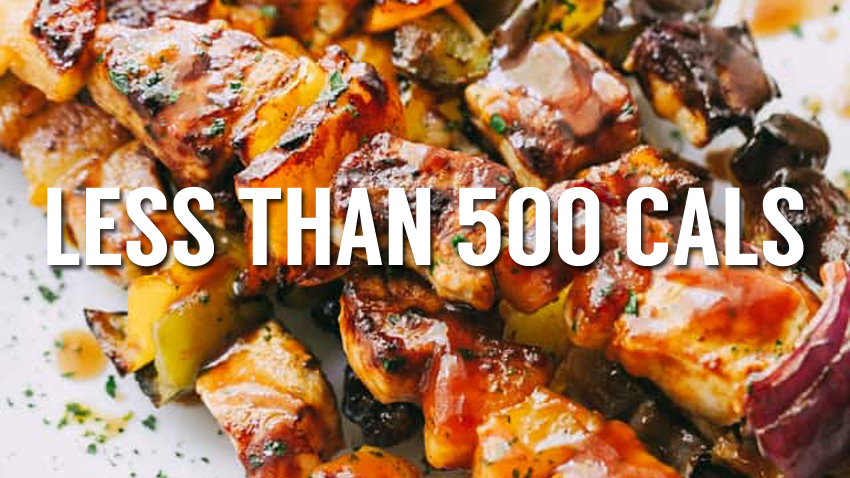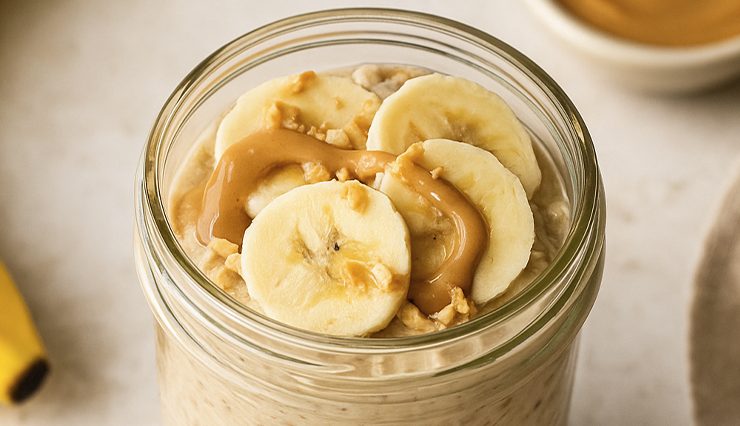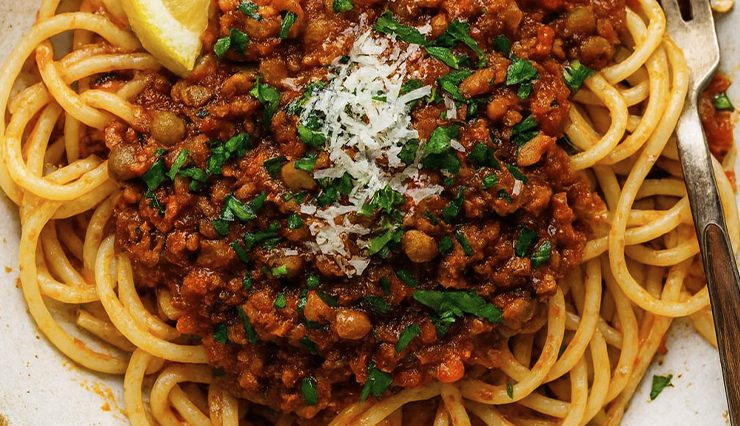Intermittent Fasting Schedule for Weight Loss (All Examples Explained)

Trimmed&Toned Team.
Intermittent fasting has rapidly gained traction as one of the most effective, sustainable, and popular approaches to weight loss in the modern world. Unlike traditional diets that focus on restricting specific foods or drastically slashing calories, intermittent fasting (IF) shifts the focus to when you eat, rather than what you eat. This flexibility is what makes intermittent fasting appealing to a broad range of people—from busy professionals and parents to athletes and health enthusiasts.
In its simplest form, intermittent fasting is about cycling between periods of eating and fasting. The goal isn’t to starve yourself, but rather to allow your body time to digest, reset, and utilize stored fat for energy. During the fasting period, you avoid caloric intake, while still being able to drink water, black coffee, or herbal tea. When it’s time to eat, you nourish your body with wholesome, nutrient-dense meals that support your health and weight loss goals.
The beauty of intermittent fasting lies in its simplicity. There are no complex rules to follow, no food groups to eliminate, and no mandatory calorie tracking. Instead, you choose an eating window that fits your lifestyle, maintain consistency, and make sure that your meals are well-balanced. For many, this simplicity reduces the stress associated with dieting and makes long-term adherence far more realistic.
So, how exactly does intermittent fasting help with weight loss? At its core, fasting periods lead to lower insulin levels in the body, which encourages the breakdown of stored fat. You also reduce your overall calorie intake by limiting the hours you spend eating, and some people naturally feel more in control of their hunger when following a structured fasting routine. There’s also emerging research suggesting that intermittent fasting can improve metabolic health, reduce inflammation, and even enhance brain function.
In this comprehensive guide, we’ll explore the most popular types of intermittent fasting, provide sample eating schedules, break down realistic meal examples with proper caloric intake, and highlight the key benefits and challenges of each method. If you’re considering intermittent fasting as a tool for weight loss, this article will help you choose a plan that fits your lifestyle, supports your health, and delivers results. As always, any changes to diet, exercise or routine should be discussed with a suitable medical professional who can best advise you on how to stay healthy and lose weight in a sustainable and safe manner.
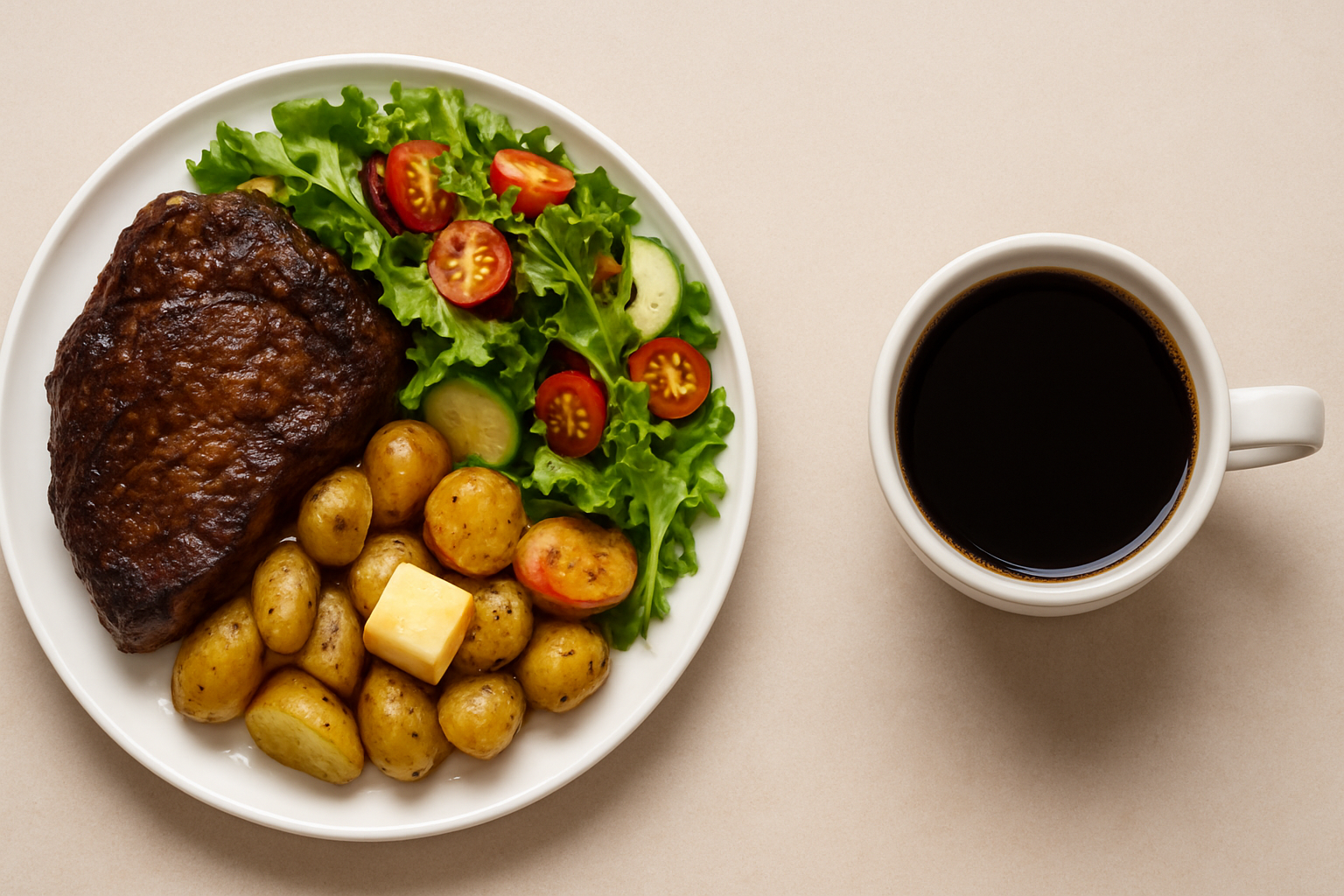
What Is Intermittent Fasting?
Intermittent fasting (IF) is an eating pattern that alternates between periods of eating and fasting. It doesn’t dictate what foods you should eat, but rather when you should eat them. This method capitalizes on your body’s natural metabolic processes. When you fast, your insulin levels drop, which facilitates fat burning. Meanwhile, your growth hormone levels increase, supporting muscle gain and recovery.
During the fasting window, you abstain from consuming any calories. That means no food or beverages with sugar, cream, or anything that will break the fast. Water, black coffee, and herbal teas are generally allowed and can help curb hunger. Once the fasting window closes, you enter your eating period, during which you should consume nutrient-dense meals to meet your body’s needs.
Why Is Intermittent Fasting So Popular?
There are several reasons why intermittent fasting has skyrocketed in popularity. First and foremost, it’s flexible. You can tailor your fasting schedule to fit your lifestyle, work hours, and personal preferences. Many people find it easier to maintain than traditional calorie-counting diets, as it eliminates the need for constant food tracking and allows for greater freedom during the eating window.
Additionally, intermittent fasting aligns with some of our biological processes. Our ancestors didn’t eat three meals and snacks daily—they ate when food was available, often going long periods without eating. IF mimics these natural patterns, which may contribute to its effectiveness and its positive impact on metabolic health.
Other benefits include:
- Better blood sugar control
- Enhanced fat burning
- Improved focus and mental clarity
- Fewer cravings and improved appetite control
- A potential increase in longevity (as seen in animal studies)
Types of Intermittent Fasting Schedules
There are various intermittent fasting schedules, each with its own structure and intensity. The best plan is the one that you can stick to consistently and that fits your individual needs.
The 16:8 Method
This is the most widely adopted form of intermittent fasting. You fast for 16 hours each day and eat all your daily calories within an 8-hour window. Most people skip breakfast and eat between 12 PM and 8 PM or 11 AM and 7 PM. It’s simple, sustainable, and effective for weight loss.
The 16-hour fasting window includes sleep, making it more manageable. During the 8-hour eating window, aim for two or three well-balanced meals.
Example Day:
- 12 PM: Grilled chicken salad with olive oil dressing, whole grain bread (600 calories)
- 4 PM: Greek yogurt with berries and almonds (350 calories)
- 7 PM: Baked salmon with quinoa and steamed vegetables (750–850 calories)
(other healthy salad recipes here)
Total: ~1800–2000 calories
This method is ideal for those who prefer fewer, larger meals and want to eliminate snacking. It’s easy to integrate into a social or work schedule and still allows for satisfying meals.
The 14:10 Method
A less aggressive version of 16:8, this approach includes a 14-hour fasting window and a 10-hour eating window. It’s particularly good for beginners who want a gentler introduction to fasting.
This schedule allows for more flexibility and may be easier to maintain over the long term, especially for people with higher energy demands or those sensitive to long periods without food.
Example Day:
- 9 AM: Smoothie with banana, spinach, protein powder, and almond milk (400 calories)
- 1 PM: Turkey sandwich on whole grain bread with mixed greens and avocado (700 calories)
- 6:30 PM: Stir-fry with tofu, brown rice, and vegetables (800–900 calories)
Total: ~1900–2100 calories
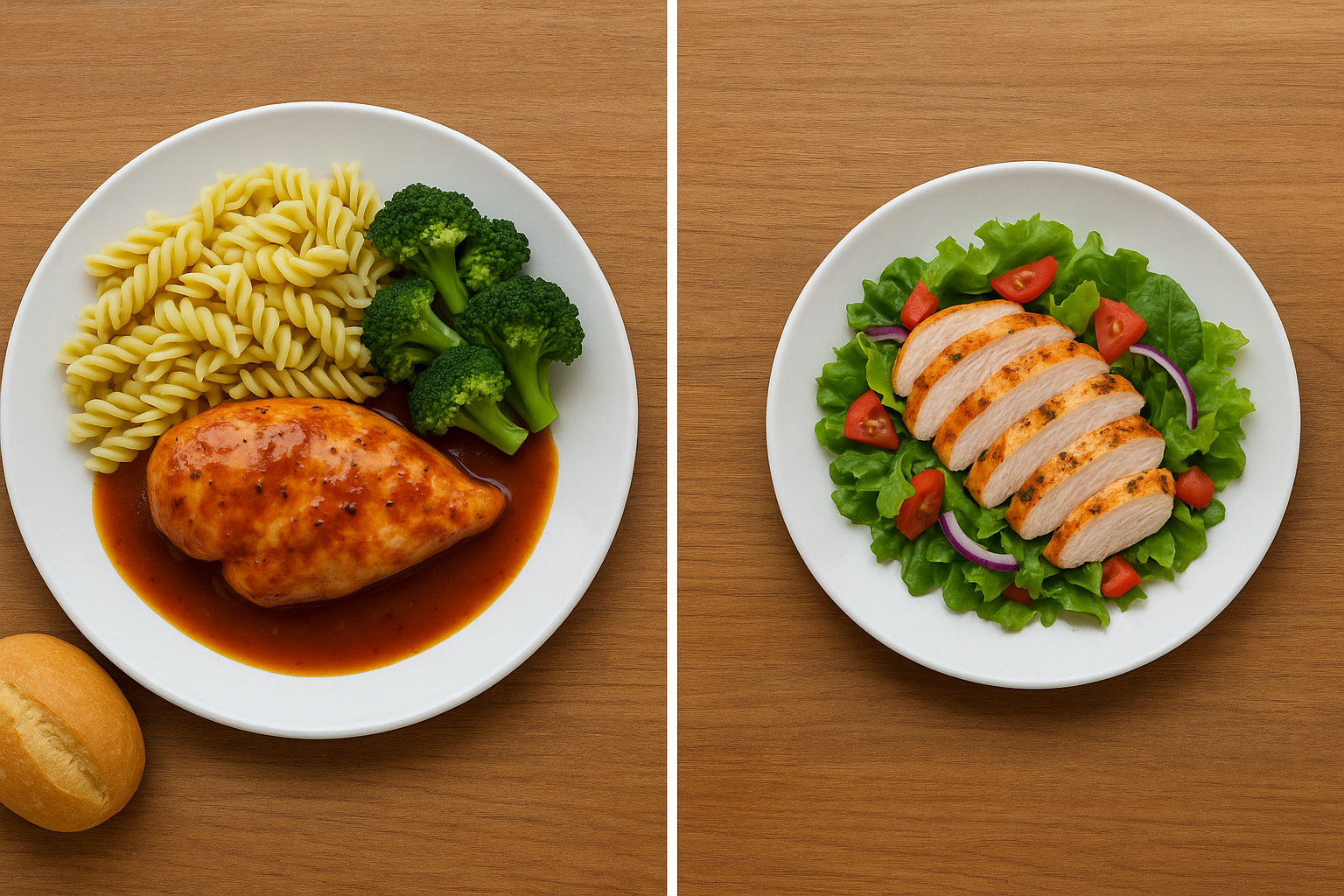
The 5:2 Diet
This fasting method involves eating normally five days a week and reducing calorie intake significantly on two non-consecutive days. On these fasting days, you consume about 500–600 calories. Making use of low-calorie recipes that are perfect for weight loss.
While not technically a fasting schedule, it incorporates caloric restriction and promotes fat loss. This method is ideal for people who can’t fast daily or prefer more flexible eating habits throughout the week.
Example Fasting Day:
- 12 PM: 2 boiled eggs with a small salad (200 calories)
- 6 PM: Lentil soup with vegetables (300–350 calories)
On non-fasting days, it’s essential to maintain normal, healthy meals without overindulging. Regular activity, hydration, and protein-rich meals are recommended to support energy and muscle maintenance.
Alternate Day Fasting (ADF)
ADF involves alternating between fasting days (typically 500 calories or less) and normal eating days. It’s one of the more advanced intermittent fasting methods and may not be suitable for everyone.
Research suggests that ADF can lead to significant weight loss and metabolic improvements. However, hunger and energy levels on fasting days can be challenging, so it requires discipline and planning.
Example Fasting Routine:
- Monday, Wednesday, Friday: Fasting Days (~500 calories)
- Tuesday, Thursday, Saturday, Sunday: Normal Eating Days (~1800–2200 calories)
ADF can be useful for those who enjoy structure and do not mind extreme fluctuations in eating patterns. It may also promote better insulin sensitivity and fat oxidation when done properly.
One Meal A Day (OMAD)
OMAD is a strict form of intermittent fasting where you consume all your daily calories within one meal, usually during a one-hour eating window. The rest of the day is spent fasting. This has shown to be very effective for those who like to eat a lot of food at once and also, those who don’t have a lot of spare time to prepare and consume meals throughout the day.
While OMAD can be very effective for fat loss due to the long fasting window, it’s not for everyone. It requires large, nutrient-dense meals and can be difficult for those with high energy needs.
OMAD Example Meal:
Total: ~1800–2000 calories
Some people thrive on One Meal A Day (OMAD) due to the simplicity and fewer meal decisions. However, others may find it too restrictive and hard on digestion.
Eat-Stop-Eat
This protocol involves fasting for a full 24 hours once or twice a week. For example, you might eat dinner at 7 PM on Monday and not eat again until 7 PM on Tuesday.
This method can be effective for reducing weekly calorie intake and encouraging fat burning, but it’s best for those who already have some experience with fasting and can tolerate longer fasts.
It’s crucial to stay hydrated and avoid breaking the fast with large, heavy meals that may upset your stomach.

Benefits of Intermittent Fasting
The benefits of IF extend far beyond weight loss. People often report better energy, improved digestion, and a greater sense of control over their eating habits. Scientific studies suggest additional benefits such as:
- Enhanced hormone regulation (including insulin and human growth hormone)
- Reduction in inflammation
- Increased fat oxidation
- Cellular repair via autophagy
- Improved heart health markers (cholesterol, blood pressure)
- Mental clarity and focus
Who Should Avoid Intermittent Fasting?
While intermittent fasting is generally safe for healthy adults, it isn’t appropriate for everyone. Those who should consult a doctor before trying IF include:
- Pregnant or breastfeeding women
- Individuals with a history of eating disorders
- People with diabetes or blood sugar disorders
- Underweight individuals
- Those taking medications that require food intake
Tips for Success
- Start slow – begin with 12:12 or 14:10 schedules.
- Stay hydrated – water, black coffee, and herbal teas help suppress hunger.
- Focus on whole foods – prioritize protein, fiber, and healthy fats.
- Be consistent – choose a schedule you can maintain.
- Don’t binge – avoid overeating during eating windows.
- Track your progress – monitor energy, weight, and hunger signals.
Final Thoughts
Intermittent fasting is not a diet—it’s a sustainable, flexible eating strategy that can support weight loss and overall health. Whether you choose a moderate plan like 14:10, a popular routine like 16:8, or an advanced method like OMAD or ADF, the key is consistency, mindful eating, and proper nutrition.
This approach offers freedom from constant snacking and calorie tracking, and it empowers you to become more in tune with your body’s true hunger and energy needs. Combined with regular exercise, quality sleep, and stress management, intermittent fasting can be a game-changing tool in your wellness toolkit.
If you’re new to fasting, start slow, be patient with your body, and find a schedule that complements your lifestyle. With time, you may find that eating less often leads to feeling better than ever.
Trimmed&Toned Team.

